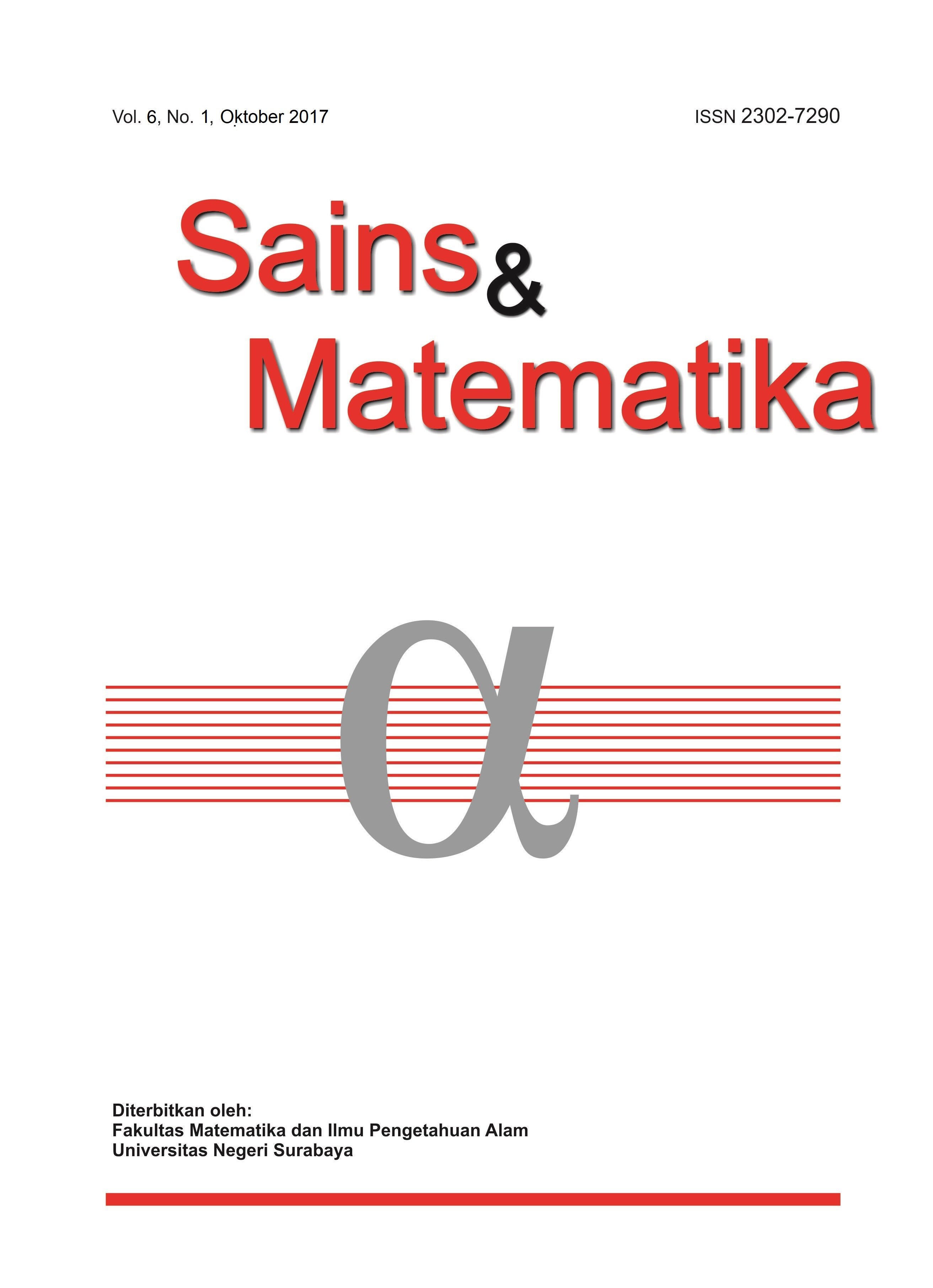Karakteristik Dielektrik Komposit Poly (Vinylidene Fluoride) PVDF/SiO2 Pasir Vulkanik Kelud
Abstract
PVDF yang dipadukan dengan bahan keramik akan memberikan pengaruh terhadap nilai dielektrik dan loss dielektriknya. Penelitian ini bertujuan mendeskripsikan sifat dielektrik PVDF/SiO2 dengan variasi penambahan massa SiO2 yang proses pencampurannya menggunakan surfaktan silika Tetramethylammonium hidroksida (TMAH). SiO2 disintesis dari pasir vulkanik Kelud menggunakan metode kopresipitasi dan dipanaskan pada suhu 800˚C selama 17 jam. Selanjutnya SiO2 dipadukan dengan PVDF yang ditambah TMAH dengan manipulasi komposisi SiO2 0 wt%, 1 wt%, 2 wt%, 3 wt%, 4 wt%, 5 wt%. Setelah itu dilakukan karakterisasi FTIR, SEM, dan LCR. Hasil karakterisasi XRD menunjukkan silika memiliki fase kristalin (Trydimite 58.5%, Crystobalite 14.3%, dan Quartz 27.2%) dengan ukuran partikel 8.25 nm. Hasil FTIR menunjukkan fase-β muncul pada setiap komposisi komposit PVDF/SiO2. Hasil SEM-EDX menunjukkan bahwa komposit PVDF/SiO2 telah tercampur secara homogen. Pada uji LCR nilai dielektrik PVDF pada frekuensi 50 Hz sebesar 3.96x104 F/m, SiO2 sebesar 1.5x104 F/m, komposit PVDF/SiO2 sebesar 2.28x104 F/m dan loss dielektrik sebesar 7,52 dengan komposisi SiO2 4 %wt.
PVDF which combined with ceramic materials will affect the dielectric value and dielectric loss. This study aims to describe the dielectric properties of PVDF / SiO2 with additional mass variations of SiO2 whose mixing process uses Tetramethylammonium hydroxide (TMAH) silica surfactant. SiO2 was synthesized from Kelud volcanic sand using coprecipitation method and heated at 800˚C for 17 hours. Furthermore, SiO2 combined with PVDF was added by TMAH with manipulation of composition SiO2 0% by weight, 1% by weight, 2% by weight, 3% by weight, 4% by weight, 4% by weight, by 5% by weight. After that, the characterization of FTIR, SEM, and LCR was carried out. The XRD characterization results showed silica has a crystalline phase (Trydimite 58.5%, Crystobalite 14.3%, and Quartz 27.2%) with a particle size of 8.25 nm. FTIR results show that β-phases appear in every PVDF / SiO2 composite composition. The SEM-EDX results show that the PVDF / SiO2 composite has been homogeneously mixed. In the LCR test, the PVDF dielectric value at a frequency of 50 Hz is 3.96x104 F / m, SiO2 1.5x104 F / m, the composite PVDF / SiO2 is 2.28x104 F / m and 7.52 dielectric losses with a composition of 4% SiO2 weight.
References
Bachmann MA and Koenig JL, 1981. Vibrational analysis of phase III of poly (vinylidene fluoride). J. Chem. Phys. 74: 5896.
Betz N, Le Moel A, Balanzat E, Ramillon JM, Lamotte J, Gallas JP, Jaskierowicz GA, 1994. FTIR Study of PVDF Irradiated by Means of Swift Heavy Ions. J. Polym. Sci. Part B: Polym. Phys, 32: 1493-1502.
Bharti V, Kaura T, Nath R, 1997. Ferroelectric Hysteresis in Simultaneously Stretched and Corona-Poled PVDF Films. IEEE Trans. Dielectrics Elec. Insulation. 4 (6): 738-741.
Fidiyanti YN, Rohmawati L, Putri NP, Setyarsih W, 2016. Analisis Nilai Kapasitansi Spesifik pada Elektroda Karbon Aktif/PVDF. Sains & Matematika, 4 (2): 55-58.
Garton A, 1992. Infrared Spectroscopy of Polymer Blends, Composites and Surfaces. Hancer Editorial: Munich.
Hadi S, Munasir, Triwikantoro, 2011. Sintesis Silika Berbasis Pasir Alam Bancar Menggunakan Metode Kopresipitasi. Jurnal Fisika dan Aplikasinya, 7 (2).
Hilczer B, Kulek J, 1998 The Effect of Dielectric Heterogeneity on Pyroelectric Response of PVDF. IEEE Trans. Dielectrics Elec. Insulation. 5 (1): 45-50.
Huang X, Zhang Xi, Jiang H, 2014. Energy Storage ViaPolyvinylidene Flouride Dielectric on the Counterectrode of Dye-Sensitized solar cells. Journal of power source Elsevier 248: 434-438
Januar A dan Munasir, 2013. Pengaruh pH Akhir Larutan pada Sintesis Nanosilika dari Bahan LuSi dengan Metode Kopresipitasi. Jurnal Inovasi Fisika Indonesia, 2(3): 7 10.
Katoch A, 2009. Stuctural and Dielectric Investigation of Nano Dispersed Poly (Vinylidene Flouride) (PVDF) Composites. School of Physics and Materials science: Thapar University, Patiala, (Punjab).
Koenig J, 2002. FTIR imaging of polymer dissolution. Adv Mater, 14 (6): 45760.
Kosim M dan Munasir, 2014. Studi Pengaruh Penambahan SiO2 Terhadap Porositas ?Al2O3. Jurnal Inovasi Fisika, 3(3).
Silverstein RM, Webster FX, 2014. Spectrometric Identification of Organic Compounds. John Wiley and Sons: New York.
Sukron M, Setyarsih W, Rohmawati L, 2015. Studi Dielektrik Polyvinilidene Fluoride (PVDF)/SiO2 dari Lumpur Sidoarjo. Jurnal Inovasi Fisika Indonesia, 04 (01): 19-22.
Syakur A, Tumiran, Berahim H, Rochmadi, 2011. Pengujian Karakteristik Limbah Pasir PLTP Dieng Sebagai Bahan Pengisi Isolator Resin Epoksi Silane. Jurnal Rekayasa Elektrika, 9(4): 177-182.
Thomas P, Satapathy S, Dwarakananth K, Varma Kbr, 2013. Dielectric properties of Poly (vinylidene fluoride)/CaCu3Ti4O12 Nanocrystal Composite Thick Films. eXPRESS Polymer Letters, 4(10): 632643.
Ye Yun, Jiang Y, Wu Z, Zeng H, 2011. Phase Transition of Poly (vinylidene fluoride) Under Electric Field. Integrated Ferroelectrics, 80 (1): 245-251.
Downloads
Issue
Section
License
Naskah yang diserahkan penulis haruslah sebuah karya yang tidak melanggar hak cipta (copyright) yang ada. Naskah yang dimasukkan harus naskah orisinil dan belum pernah dimuat di terbitan manapun. Segala hak yang tercantum pada diri penulis, melekat pada pengelola jurnal untuk mengedit, mengupload, dan mempublikasikan naskah kepada khalayak umum. Abstract views: 400
,
Abstract views: 400
, PDF Downloads: 314
PDF Downloads: 314














